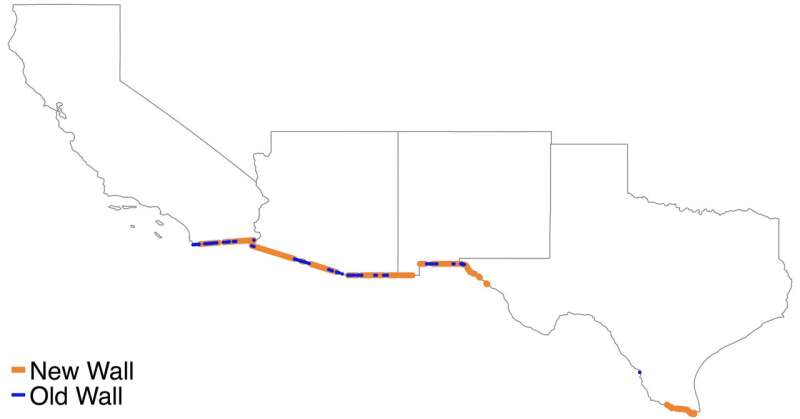Study on economic impact of border wall finds high costs and few benefits to US

A new Dartmouth-Stanford study examining the economic impact of a border wall expansion between the U.S. and Mexico between 2007 to 2010 finds that the expansion minimally reduced unauthorized Mexican migration and was largely harmful to U.S. workers.
Despite construction costs of the wall of $2.3 billion or approximately $7 per person in the U.S., the study found that the border wall expansion harmed college educated U.S. workers by $4.35 per person and only benefited less educated U.S. workers by an average of 36 cents.
The study finds that in lieu of the border wall expansion, if the U.S. had simply reduced its trade costs with Mexico so that they were closer to domestic costs, all U.S. and Mexican workers would have substantially benefited.
The research was co-authored by Dartmouth economist Treb Allen, Stanford economist Melanie Morten and Stanford doctoral candidate Cauê Dobbin, who embarked on the study in the summer of 2016 after seeing a need for more empirical evidence on the effects of the border wall amid ongoing debates over immigration. The new 101-page working paper is abridged in an executive summary and will be posted online by the National Bureau of Economic Research on Nov. 19.
"Once we account for the complex ways the border wall expansion impacted the economy, we found that almost all workers were made worse off. Even those who did benefit did so by a very small amount. This is all the more striking given the substantial construction costs," said Treb Allen, an associate professor of economics and distinguished professor of economics and globalization at Dartmouth.
The researchers examined the U.S. - Mexico border wall expansion that resulted from the Secure Fence Act of 2006 for which 548 miles of additional fencing was constructed along nearly one-third of the 1954-mile border.
To evaluate the effect of the border wall expansion on migration patterns, the team used confidential data from the Mexican government to examine how migration flows changed after the border wall expansion. The researchers estimate that the wall expansion reduced the total number of Mexican-born workers coming into the U.S. by only 0.6 percent, roughly 83,000 people.
"If the goal of policy is to reduce migration, it's important to examine what leads people to migrate in the first place," said Melanie Morten, an assistant professor of economics and faculty fellow at the Stanford Institute for Economic Policy Research (SIEPR). "Mexican citizens tended to migrate to attain higher wages. The wall did not change that."
The study considered two other policies that the U.S. could have implemented:
- One such policy took a more extreme approach calling for additional fencing for 50 percent of the remaining border. The results estimate that college educated U.S. workers would have been made even worse off by $7.60 while benefits to less educated U.S. workers would have only increased to 58 cents.
- If the additional fencing along the border had not been constructed and the U.S. had reduced its trade costs with Mexico so that they were 25 percent closer to domestic costs, all U.S. and Mexican workers would have benefited. Instead of facing an economic loss as they did with the wall, college educated U.S. workers would have seen a $80.59 increase while less educated U.S. workers would have experienced a $58.67 increase in annual income.
"Rather than building walls, our study finds that a more effective way of reducing migration is to reduce the incentives to migrate. Promoting economic growth in the sending country by reducing trade costs is a great way to do that, as it also benefits U.S. workers," added Allen.
Provided by Dartmouth College




















